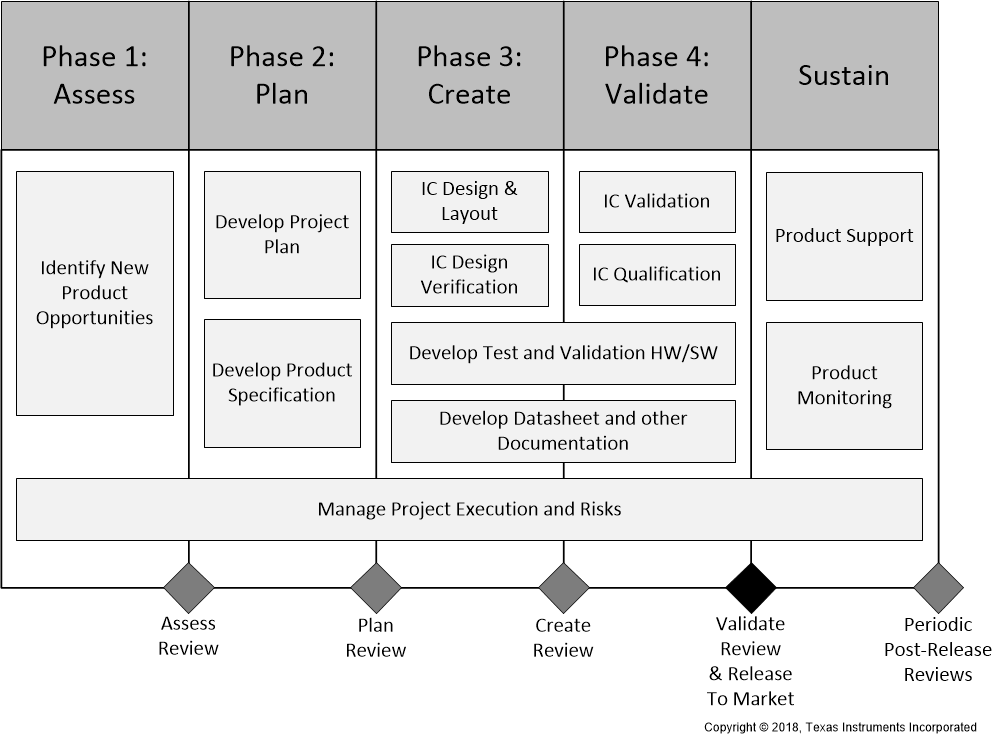SLVA528D September 2012 – August 2021 TPS65381-Q1 , TPS65381A-Q1
- Trademarks
- 1Introduction
- 2Product Overview
- 3Development Process for Management of Systematic Faults
- 4TPS65381x-Q1 Product Architecture for Management of Random Faults
-
5TPS65381x-Q1 Architecture Safety Mechanisms and Assumptions of Use
- 5.1 Power Supply
- 5.2 Regulated Supplies
- 5.3
Diagnostic, Monitoring, and Protection Functions
- 5.3.1 External MCU Fault Detection and Management
- 5.3.2 Voltage Monitor (VMON)
- 5.3.3 Loss-of-Clock Monitor (LCMON)
- 5.3.4 Junction Temperature Monitoring and Current Limiting
- 5.3.5 Analog and Digital MUX (AMUX and DMUX) and Diagnostic Output Pin (DIAG_OUT)
- 5.3.6 Analog Built-In Self-Test (ABIST)
- 5.3.7 Logic Built-In Self-Test (LBIST)
- 5.3.8 Device Configuration Register Protection
- 6Application Diagrams
- 7TPS65381x-Q1 as Safety Element out of Context (SEooC)
- 8Revision History
3.1 TI New-Product Development Process
Texas Instruments has been developing components for automotive and industrial markets since 1996. Automotive markets have strong requirements regarding quality management and product reliability. The TI new-product development process features many elements necessary to manage systematic faults. Additionally, the documentation and reports for these components can be used to assist with compliance to a wide range of standards for customer’s end applications including automotive and industrial systems (for example ISO 26262-4, IEC 61508-2).
This component was developed using TI’s new product development process which has been certified as compliant to ISO 9001 / IATF 16949 as assessed by Bureau Veritas (BV).
The standard development process breaks development into phases:
- Assess
- Plan
- Create
- Validate
Figure 3-1 shows the standard process.
 Figure 3-1 TI New-Product Development
Process
Figure 3-1 TI New-Product Development
Process